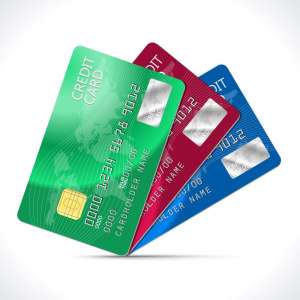Food storage is an essential aspect of cooking and meal preparation that often goes overlooked. One of the most versatile and practical materials for food storage is wax paper. While it may not be as commonly used as plastic wrap or aluminum foil, wax paper offers numerous benefits that can make it a valuable addition to any kitchen. In this article, we will explore the advantages of using wax paper for food storage, its various applications, and some tips for proper usage.
What is Wax Paper?
Wax paper is a type of paper that has been coated with a thin layer of wax. This coating makes the paper moisture-resistant and somewhat greaseproof, which helps protect food items from moisture and air. Typically, wax paper is made from lightweight paper and is often used in baking, food preparation, and storage. It is important to note that wax paper is not heat-resistant, so it should not be used in the oven or microwave.
Environmental Benefits
Biodegradable Material
One of the most significant advantages of wax paper is its environmental impact. Unlike plastic wraps, which can take hundreds of years to decompose, wax paper is biodegradable. This means that when disposed of properly, it will break down naturally and not contribute to landfill waste. For those looking to reduce their environmental footprint, using wax paper is a more sustainable option.
Reduced Plastic Use
In an era where plastic pollution is a pressing concern, using wax paper can help minimize reliance on single-use plastics. By opting for wax paper over plastic wrap or bags, you are making a conscious choice to reduce plastic waste. This small change in your food storage practices can contribute to a larger movement toward sustainability and environmental responsibility.
Versatile Food Storage
Wrapping and Storing Food
Wax paper is exceptionally versatile when it comes to food storage. It can be used to wrap sandwiches, cheese, and baked goods. Its moisture-resistant properties help keep food fresh without trapping moisture, which can lead to sogginess. For instance, wrapping a sandwich in wax paper can keep the bread from getting wet while still allowing it to breathe.
Lining Baking Sheets
Another practical use for wax paper is lining baking sheets. While it is not suitable for high-temperature baking, it works well for no-bake recipes or when preparing items that will be refrigerated or frozen. This prevents sticking and makes cleanup easier. Simply line your baking sheet with wax paper before adding your ingredients, and you will have a hassle-free cooking experience.
Separating Layers of Food
When storing baked goods, such as cookies or brownies, wax paper can be used to separate layers. Placing a sheet of wax paper between layers prevents them from sticking together, keeping them fresh and intact. This is particularly useful for items that are delicate or have frosting, as it helps maintain their appearance.
Cost-Effective Solution
Affordable and Accessible
Wax paper is often more affordable than many other food storage options. It is widely available in grocery stores and is usually sold in large rolls, making it a cost-effective solution for various kitchen needs. With its multiple applications, wax paper can save you money in the long run by reducing food waste and minimizing the need for additional storage materials.
Long Shelf Life
Another financial benefit of wax paper is its long shelf life. It does not spoil or degrade over time, as long as it is stored in a cool, dry place. This means that you can purchase a roll of wax paper and keep it on hand for whenever you need it, ensuring that you always have a reliable food storage option available.
Easy to Use
Simple to Cut and Handle
Wax paper is easy to cut and handle, making it a convenient option for food storage. You can easily tear off the desired amount without the need for scissors or special tools. This ease of use makes it ideal for quick meal prep or snacks on the go. Whether you're wrapping a piece of fruit or preparing a lunch for work, wax paper provides a straightforward solution.
No Special Storage Requirements
Unlike some food storage materials that require specific conditions or handling, wax paper does not have any special storage requirements. You can keep it in your kitchen drawer or pantry, and it will remain effective for all your food storage needs. This convenience adds to its appeal as a go-to option for many home cooks.
Health and Safety Considerations
Food-Safe Material
Wax paper is considered food-safe, meaning it does not leach harmful chemicals into food. This is an essential factor for anyone concerned about food safety and health. Unlike some plastics that can release toxins when heated or in contact with fatty foods, wax paper provides a safer alternative for food storage.
Prevents Cross-Contamination
Using wax paper for food storage can also help prevent cross-contamination. When wrapping foods, especially raw meats or fish, using wax paper can create a barrier that minimizes the risk of transferring bacteria to other foods. This is particularly important in maintaining food safety in the kitchen and ensuring that your meals are safe to consume.
Limitations of Wax Paper
Not Heat-Resistant
While wax paper has many benefits, it is essential to recognize its limitations. Wax paper should not be used in the oven or microwave, as the heat can melt the wax coating and potentially release harmful substances. For cooking or baking that requires high temperatures, it is essential to use materials designed for heat, such as parchment paper or aluminum foil.
Not Suitable for Freezing
Another limitation is that wax paper is not ideal for long-term freezing of food items. While it can be used for short-term storage in the freezer, it does not provide an airtight seal, which is crucial for preventing freezer burn and maintaining food quality over time. For freezing, consider using freezer bags or airtight containers instead.
Conclusion
In conclusion, wax paper is a versatile, cost-effective, and environmentally friendly option for food storage. Its moisture-resistant properties make it an excellent choice for wrapping food, lining baking sheets, and separating layers of baked goods. Additionally, it is easy to use, food-safe, and helps reduce plastic waste.
While there are limitations to its use, such as its unsuitability for high temperatures and long-term freezing, the advantages of wax paper often outweigh these drawbacks. By incorporating wax paper into your food storage practices, you can enjoy the benefits of a sustainable and effective solution that enhances your cooking and meal preparation experience. Whether you are a seasoned cook or a busy parent, wax paper is a valuable tool that can help simplify your kitchen tasks and keep your food fresh.





